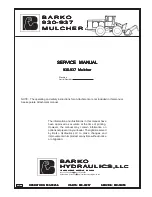
42
6.
Rotate Control Knob and increase current until the desired test current is set.
Note the phase angle displayed,
φ
I lags V
. The relay may be tripped at this
point depending on the measured phase angle displayed. The phase angle
display is the measured phase angle between the
AC CURRENT MAIN
output
and the
AC AUX
Output. It displays
Current lagging Voltage
. Since some
power directional elements are tested with current leading the voltage, simply
subtract the angle indicated from 360 to get the appropriate leading angle. For
example, if the test is to be conducted at 30 degrees current leading voltage, set
the phase angle to 330 degrees (330 current lags voltage equals 30 degrees
current leads voltage).
7.
Using the arrow key, highlight the phase angle displayed. Using the Control
Knob, rotate the phase angle to the desired test angle.
8.
Using the arrow key, highlight either
AC AMPERES
or
AC VOLTS
. Using the
Control Knob, decrease the AC Volts (or increase the AC Current) until the trip
contacts just close. Read and record the WATTS indicated for pick up value.
Max
∠τ
(Angle of Torque) Test:
9.
Continue decreasing the AC Voltage (or increasing the AC Current) slightly until
well across the operating characteristic line (trip contacts are closed).
10.
Using the arrow key, highlight the phase angle display. Using the Control Knob,
vary the Phase Angle clockwise until the contacts open. Note the Phase Angle
(
θ
1).
11.
Vary the Phase Angle counter-clockwise. The contacts will close again
indicating that we are across the operating characteristic. Continue moving in
the counter-clockwise direction until the contacts just open again. Note the
Phase Angle (
θ
2). To calculate the maximum angle of torque, convert the larger
of the two lagging angles to a leading angle and add, then divide by two.
MAX
∠τ
= (
θ
1+
θ
2) / 2
For example, if the relay has a maximum angle of torque at 30 degrees current
leading
voltage, typical recorded phase angles could be 240 and 60, current
lagging
voltage.
Converting 240 to a leading angle, results in an angle of 120 degrees current
leading
voltage. Adding the two angles and dividing by 2 results in a value of 30 degrees,
MAX
∠τ
=
(
120 lead + (-60 lag)
)
/ 2
⇒
MAX
∠τ
= 60 / 2 or 30 degrees Leading
Summary of Contents for SR-98
Page 93: ...87...
















































